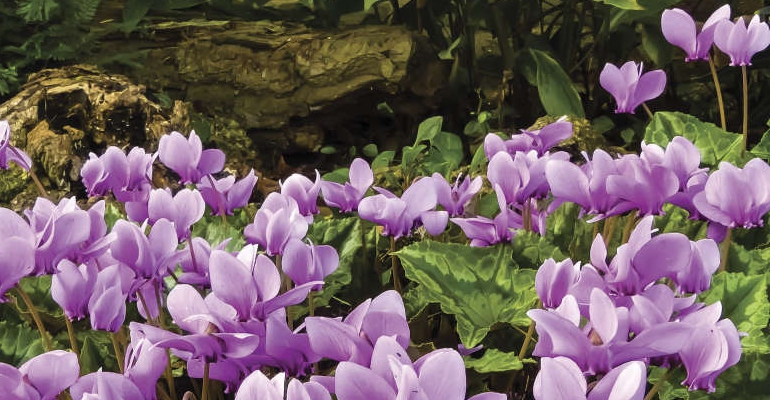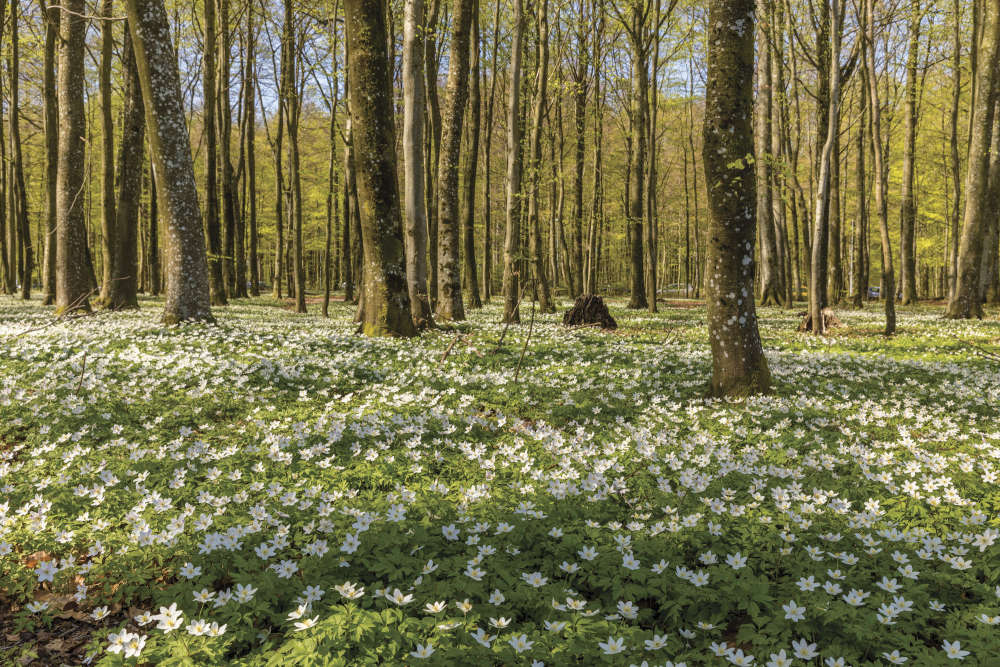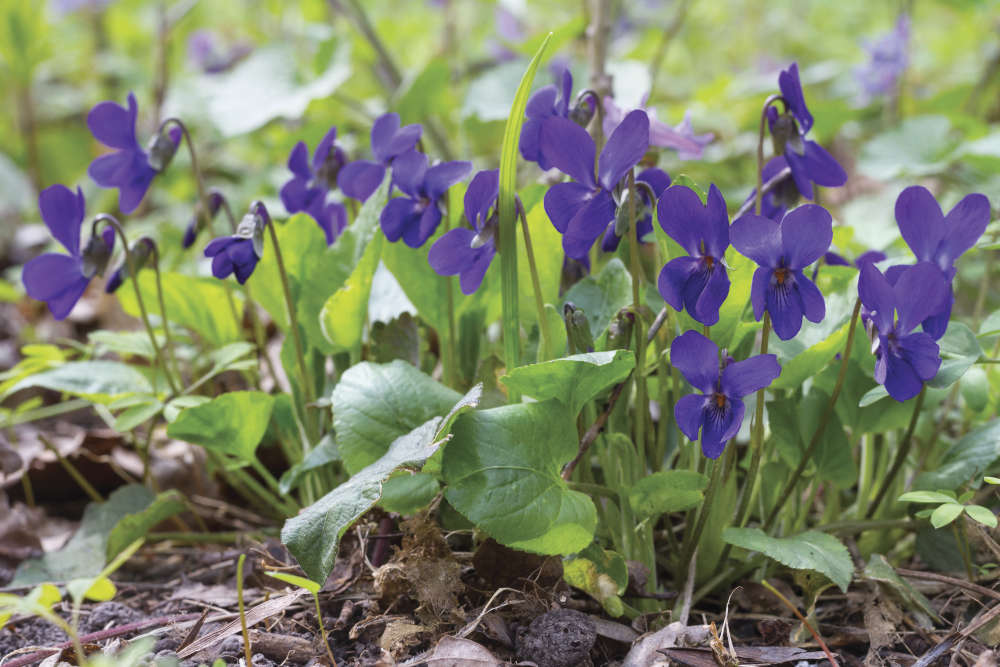
The term ‘woodland’ instantly conjures up an image of a vast acreage, complete with ancient trees. Plants labelled ideal for a woodland setting are often assumed to be unsuitable by folk with just a modest-sized plot to offer – but, think again, says Flo Whitaker
In early spring, sunlight filters through the bare branches of a deciduous wood, illuminating ground dwelling plants. They enjoy gentle sunshine, but dislike heat, so rely on emerging tree foliage to provide a shady summer canopy. Come winter, falling leaves add nutrients to the soil. Once again, sunlight penetrates the woodland floor – and the cycle continues. So, from a plant’s perspective, “woodland” can be simply defined as “light shade with humus-rich soil.” No matter how small your garden, if you have deciduous shrubs or a deciduous tree, you can utilise the ground underneath as a miniature habitat for shade-worshippers.
Here are three easy woodland characters to try – you’ll find pots of them in the garden centres about now! Wood anemone, (Anemone nemorosa) is a native ‘wild’ plant that also thrives in a border. Extremely slow growing; (taking about 100 years to cover a metre of ground!) it produces elegantly dissected leaves, (20 cms high) and flowers in early spring. If, on a countryside ramble, you chance upon a vast carpet of anemones, pause to admire their beauty – and tenacity. That colony may be thousands of years old. Attractive pinky/mauve cultivars are also available, but nemorosa, with its exquisite starry white flowers, is hard to beat.

On a warm day, the scent from the tiny purple or white blooms of common violets, (Viola odorata) carries a considerable distance. They enjoy a damp border, or the cool shade at the base of a hedge. All cultivated violas, (and their large flowered cousins, pansies) are related to the common violet. There are many viola cultivars in an array of colours that can be utilised in a woodland themed display. Species cyclamen, (10-15 cms) produce dainty, fragile-looking flowers – but are super-hardy. Their ground-hugging foliage is often attractively marked with silvery/cream highlights. Cyclamen coum has wide, rounded leaves and appears from Christmas through to late February/March, whereas Cyclamen hederifolium carries flowers in autumn, (typically September - November.) They make a useful double-act; as C. hederifolium retreats into dormancy, C. coum obligingly springs into action. Hederifolium’s leaves are more pointed and ivy-like, (‘hedera’ is the Latin name for ivy.) It is the most vigorous of the two and will colonise tough environments, such as rough-mown grass under trees.
Woodland plants aren’t bothered by sub-zero temperatures; however, waterlogged soil is their enemy. Moisture retentive, but well-drained soil is essential. Adding well-rotted compost to the planting holes is helpful, as is an annual mulch of leaf mould or chipped bark – this holds in moisture and mimics the conditions of a woodland floor. Like Goldilocks, woodland plants demand conditions that are ‘just right’, but it’s worth indulging them as they are long-lived stalwarts that bring colour at the dullest times of the gardening year.


 Blooming Times: Happy Faces
Blooming Times: Happy Faces
 Blooming Times: Winter Sparklers
Blooming Times: Winter Sparklers
 Homes Extra: Restore, Repair, Recycle
Homes Extra: Restore, Repair, Recycle
 Home Style: A Scandi Winter's Tale
Home Style: A Scandi Winter's Tale
 Blooming Times: Winter Wonders
Blooming Times: Winter Wonders
 Home Style: Bold, Brave & Beautiful
Home Style: Bold, Brave & Beautiful
 Blooming Times: The Answer Lies in the Soil
Blooming Times: The Answer Lies in the Soil
 Blooming Times: Heavenly Hyacinths
Blooming Times: Heavenly Hyacinths
 Legendary Builds with Phoenix Construction Services
Legendary Builds with Phoenix Construction Services
 Blooming Times: Know Your Enemy
Blooming Times: Know Your Enemy
 Bespoke Dreams from Eridge Green Kitchens
Bespoke Dreams from Eridge Green Kitchens
 10 Hot Years: iFit Fires & Flues
10 Hot Years: iFit Fires & Flues
 Home Style: Bold Type
Home Style: Bold Type
 Blooming Times: The Sky's the Limit
Blooming Times: The Sky's the Limit
 Home Style: A Better Way of Life
Home Style: A Better Way of Life
 Homes Extra: Shed Space
Homes Extra: Shed Space
 Blooming Times: Top of the Pots
Blooming Times: Top of the Pots
 Kids Zone: Get the Kids Growing
Kids Zone: Get the Kids Growing
 Home Style: Pastures New
Home Style: Pastures New
 Homes Extra: Let There Be Light
Homes Extra: Let There Be Light